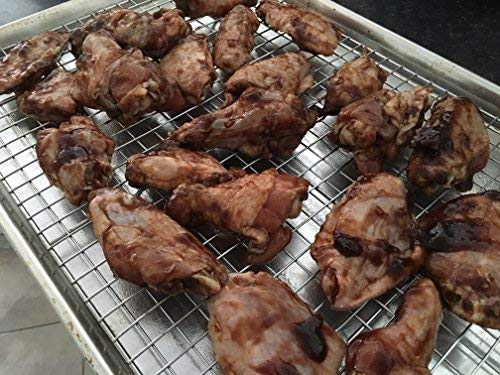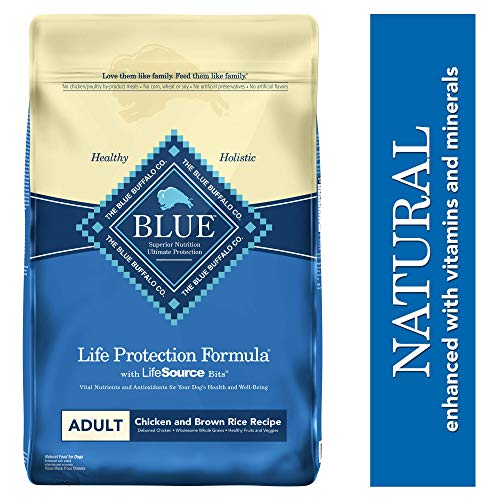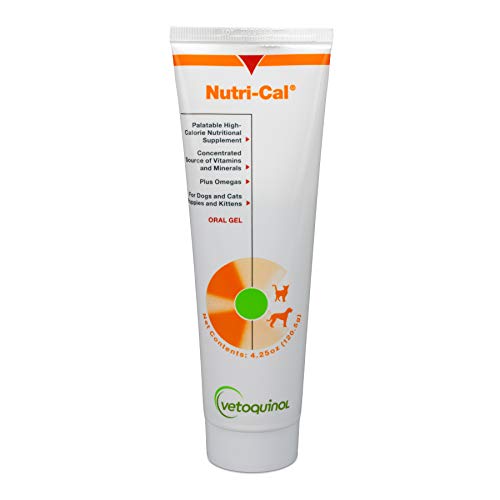If your dog is having a bout of tummy unhappiness, you’ve definitely considered a bland diet, most likely chicken and rice. If you’re not used to preparing this diet, you might be wondering, “how much chicken and rice to feed a dog?”
If this is your question, we’ve got some answers that might help.
Table of Contents
How Much Chicken And Rice to Feed Your Dog?
Feed your dog chicken and rice in the ratio 2:1. So, if you’re feeding your dog a cup of food, one-third should be chicken and two-thirds should be rice. Now, the chicken should be boneless and skinless. Keep feeding your dog in small quantities until your dog’s stool begins to return to normal.
While your dog is recovering, keep your dog on the chicken and rice diet but lengthen the time between the meals gradually until the stools return to normal. At the same time, start transitioning back to your dog’s normal food until he has fully recovered. Do this by including your dog’s kibble into the chicken and rice in increasing quantity until you completely eliminate the bland diet.
Note that you shouldn’t just make a complete switch from the bland diet to your dog’s normal diet. This could further upset your dog’s stomach. So, make the change gradual to give your dog some time to ease into his normal diet again.
If after a couple of days your dog does not show improvement, then it might be time to consult your vet. They will be able to help with a better treatment regimen for your dog.
Why Is Chicken And Rice Great For Dogs With Upset Stomachs?
Bland diets like chicken and rice are usually recommended as they are easier to digest which is important for your dog’s already-stressed system. This diet will supply your dog’s body with some essential nutrients while helping to restore the digestive system back in shape. Furthermore, because chicken and rice is quite tasty, dogs usually gobble it up faster than you can think.
So, for dogs with lack of appetite as the problem, chicken and rice also makes an excellent recommendation for them as well. In fact, chicken and rice will solve almost any gastric problem in dogs including vomiting. For a vomiting dog, put your dog on a fast for 24 hours first before starting him on a chicken and rice diet.

Just like humans, dogs come down with stomach upsets once in a while. When your dog is in such a situation, definitely, you’d do anything to make them happy.
Vomiting, constipation or gas, as well as persistent diarrhea, can cause a dog’s system to get stressed. In such a case, sometimes, your vet might recommend that you switch to a bland diet temporarily.
The chicken and rice diet for dogs is like chicken soup for humans. We love it when we are feeling low and it makes us feel better. The chicken and rice diet does the same thing for dogs.
Chicken contains all the right amino acids, minerals, and vitamins to help your dog recover nicely.
Dogs with diarrhea will find chicken and rice a soothing diet. Plus, the diet would also help them make better stools as well.
Sometimes, puppies might also require a bland diet if they are experiencing stomach trouble. However, please, consult with your vet before switching your pup to a chicken and rice diet. Because puppies are still growing, they need a lot of additional nutrition and might not take a temporary deprivation well.
How To Make Chicken And Rice For Dogs
Here is how to make chicken and rice for dogs.
1. Cube The Chicken
You want to, first of all, cube the chicken. For small dogs, the chicken cubes should be about half an inch in size. For larger dogs, on the other hand, the chicken cubes can be about an inch in size. In the off chance that your dog is losing several teeth, you might want to make the chicken cubes even smaller.
2. Cook The Chicken In A Sizable Stockpot
Next, put your now-cubed chicken into a sizable stockpot. Then fill the pot with sufficient water such that it covers the chicken completely and bring the chicken to a boil. When the chicken is boiled, reduce the heat so that the chicken can simmer a bit.
[amalinkspro type=”cta-btn-css” ctabtn-id=”” asin=”B000F5IH6Y” apilink=”https://www.amazon.com/dp/B000F5IH6Y?tag=dpg-amalinks03-20&linkCode=osi&th=1&psc=1″ addtocart=”true” new-window=”true” nofollow=”true” alignment=”alignright”]Buy on Amazon[/amalinkspro]
Leave the chicken to continue simmering until the meat looks completely white.
Generally, the entire cook time should take between 10 to 30 minutes, depending on how large or small the chicken cubes are.
3. Leave The Chicken To Cool On A Baking Sheet
Next, you want to remove the chicken from the water and leave it to cool either by running cold water over the pieces or by spreading them over a baking sheet. Do not throw the broth. You’d want to reserve it for later.
When that’s done, skim whatever fat there is (if there is) from the top of the chicken broth. After doing that, pour the liquid that’s left and pour it into a container.
4. Cook The Rice In The Chicken Broth
First, you want to cook a cup of white rice if your dog is a large breed. However, for smaller dogs, you can do with a smaller quantity of rice.
Begin by washing your rice. Make sure you use plenty of water to wash the rice. With your rice completely submerged in water, stir the rice with your hands. Then rinse it several times until what you have is clear water left from the washing.
You’re going to be cooking the rice in the chicken broth in order to give it some added flavor. So, bring your chicken broth to the boil, and once it is boiling, pour your washed rice into the boiling broth and bring that to the boil as well. You should also allow the rice to simmer slightly as well just as you did for the chicken.
Cover your pot and let the rice boil for about 20 minutes. By the time the rice is fully cooked, it should feel a little soggy. However, the water would have been fully absorbed by then.
Once the rice is completely cooked, you want the rice to cool completely. To fast-track this process, you can spread out the rice on top of a baking pan and then fan it out using a cardboard sheet.
Here’s a video demonstration of how to prepare chicken and rice for your dog.
How To Serve A Dog Chicken And Rice
When it’s time to serve your dog, you need to blend the rice and chicken together using a fork. Blend the chicken and rice in a 2:1 or 3:1 ratio. So, for every 1 cup of chicken, you serve two to three cups of rice.
Is White Rice Good For Dogs?
White rice is indeed good for dogs. It digests easily and helps relieve stomach upsets. People advocate for white rice over brown rice in the case of tummy trouble because, though brown rice has better health benefits, white rice is a lot easier to chew and digest for dogs than brown rice.
What Are The Health Benefits Of White Rice For Dogs?
Besides being easily digestible and easing stomach upsets, rice also has other health benefits for your dog:
- It provides your dog with energy.
- It has a really low percentage of fat.
- It is low in sodium.
- Quite rich in vitamin D.
- Provides your dog with needed calcium, niacin, thiamine, iron, and riboflavin.
- Makes for better bowel movements for dogs.
- Helps to reduce blood cholesterol.
- Improves digestion in dogs.
- Also helps with skin ailments as well.
Can You Give Your Dog Chicken and Rice Every Day?
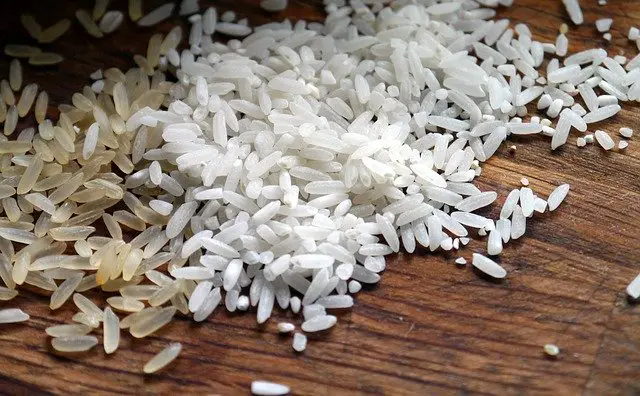
You can feed your dog chicken and rice but not every day. Ensure that you rinse your rice well before cooking and make sure you use sufficient amounts of water to cook the rice. Eating rice does have health benefits for dogs. Chicken is also great for dogs as it is a healthy source of protein. Nevertheless, chicken and rice alone is an unbalanced diet and could cause your dog to develop allergies or diabetes.
Can You Feed Your Dog Chicken Liver, Heart, Feet, and Neck?
There are many conversations surrounding whether or not dogs can eat the afore-mentioned chicken parts. This is especially controversial because humans do not eat the parts. Some people believe that these parts should not be fed to dogs if humans themselves cannot eat them. Others are of the opinion that these parts don’t hurt the dogs and so should be okay for dogs.
Whatever party you belong to, let’s find out if your dog can have these parts as mentioned above.
Chicken Feet
Chicken feet contain glucosamine — a vital nutrient needed to maintain joint health in dogs. Also, chicken feet are like a natural toothbrush. When dogs chew on them, they help to reduce the buildup of tartar in your dog’s dentition.
Considering how that older dogs battle with arthritis and deteriorating dentition, chicken feet are ideal for a senior dog, helping them fight weakening teeth and joints.
Chicken Heart
Chicken hearts contain essential amino acids, the easily digestible kind that is great for your dog. Chicken heart also contains vitamins A and B, with iron, and taurine. You can serve chicken heart as an occasional treat or as a meal for your dog.
Chicken Neck
Chicken neck comes with calcium and helps to scrape off plaque from the teeth. To be safe, ensure that you buy the chicken neck raw and go for those ones from chickens that weren’t raised with either hormones or antibiotics. Also, make sure that chicken neck does not exceed 30 to 50% of your dog’s total intake.
Organ Meats, E.G. Liver, Kidney
Organ meats such as giblets and liver are great for your dog. In fact, organ meats provide the most nutrition of all the parts of a chicken there are.
To keep the diet balanced, when feeding your dog organ meat, you want to make about 5 to 10% of the meal a raw diet.
Organ meats are a great source of essential amino acids which help to maintain healthy coat and skin. They also help to repair damaged tissues and improve organ functions in your dog’s system as well.
Other nutrients provided by organ meats include iron, zinc, vitamins A, B, E, and K, phosphorus, biotin, niacin, selenium, folacin, as well as omega-3 and omega-6 fatty acids.
Chicken kidney is another important organ meat to include in your dog’s diet. Chicken kidneys are a great source of vitamins A, B, E, and K, zinc, and iron.
Can You Feed Your Dog Raw Chicken?
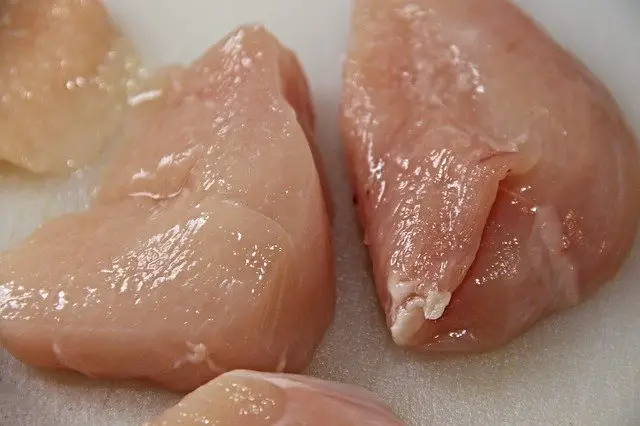
Raw chicken is safe. Therefore, you can feed your dog raw chicken. It’s even ideal for your dog’s health. Bones from raw chicken are even much safer than cooked chicken bones as they are more elastic, dense, and less likely to splinter and cause tears along the digestive tract. Besides that, raw chicken bones are packed full of nutrients which are essential for your dog’s optimum health. Again, raw chicken bone is a great teeth cleaner, removing plaque from the teeth as well.
Learn other ways to maintain healthy teeth in your dog. Click here to read our article on Dog Dental Care — The Complete Guide To Oral Hygiene.
Just note the following precautions when feeding your dog raw chicken bone.
Precautions When Feeding Your Dog Raw Chicken Bone
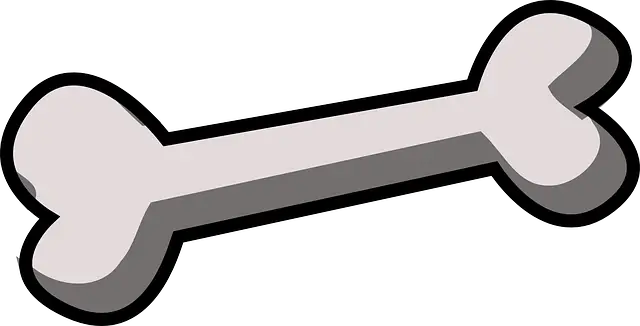
- Always feed raw bones in moderation. Limit your dog’s intake of bones to two per week at the most and make sure that the days when your dog will be eating the bones are well-spaced.
- Make sure your dog only eats raw bone when you’re available to supervise him.
- Kids and other pets should not be close to your dog while he’s munching on his bone.
- The bones you feed your dog should be large enough such that it is impossible for your dog to swallow it whole. Even more precisely, you want to look out for your dog’s size when feeding them bones.
- Keep in mind that eating too many bones can cause constipation in your dog (if that happens to your dog, click here to read My Dog Is Constipated, What Can I Give her?)
- Be careful when feeding geriatric dogs raw bones. Oftentimes, their teeth are not as they used to be and these bones might either crack or even damage their teeth.
- Don’t feed your dog large marrow bones such as lamb cutlets, t-bones, as well as knuckle bones. The problem with these bones is that their outer rims are so thick, they could cause crack your dog’s teeth while they try to have their way with the bone.
Can Your Dog Get Sick From Eating Raw Chicken?
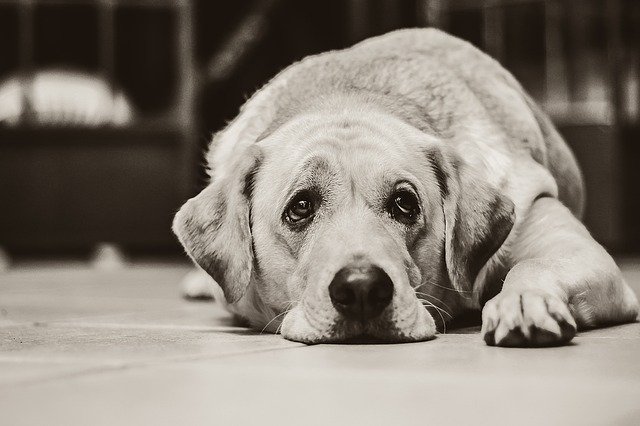
Your dog could get sick from eating raw chicken. If the chicken contains chemicals sprayed on them by manufacturers, consuming this could cause your dog to fall sick. Also, if the chicken is prepared in unsanitary conditions, your dog could also get sick by eating raw chicken.
However, if you put in the same care you put into preparing chicken for your family into preparing chicken for your dog, you shouldn’t have a problem.
One common fear many dog parents have is salmonella, and truly, raw chicken could contain salmonella. However, this is not limited to raw food. Even some high-quality highly processed kibble have been recalled as a result of salmonella contamination.
However, typically, the way the immune systems of dogs are built, they can take on just about anything. They can also fight off bacterial invasion from the raw chicken they eat. And if you think about it, it does add up. Considering everything that dogs eat on a regular ranging from rotting rubbish to feces, sometimes, dogs should fall ill more often than they do. However, this is hardly ever the case.
Nevertheless, it is not an impossibility for your dog to fall ill from a salmonella infection, even though it’s quite rare.
1. Chemicals
Sometimes, in a bid to preserve the chickens we buy, manufacturers spray some chemicals on to the chicken. This is to preserve the chicken so it can last longer in the freezer before they are sold.
To save your dog from this, ensure that you wash your chicken thoroughly before feeding it to your dog.
2. Salmonella
Salmonella is a huge problem in the pet food industry and not just in raw chicken. Even highly processed, high-quality kibble have sometimes been recalled as a result of salmonella contamination.
Generally, a dog’s immune system can handle salmonella infection from any of these sources. A dog’s stomach is super acidic, making it practically impossible for salmonella to replicate in your dog’s system. In fact, salmonellosis in dogs from eating a BARF diet has not been recorded yet.
For you and your human family though, salmonella is a big risk. So, you must wash the chicken thoroughly, wash your hands, wash the knife, and clean the counter thoroughly when feeding your dog raw chicken.
You wouldn’t want your family coming down with salmonellosis as a result of exposure to salmonella from your dog’s raw food diet.
What Other Options Can You Feed Your Dog With Diarrhea Besides Chicken And Rice?
Other options to feed your dog with diarrhea besides chicken and rice include plain nonfat yogurt and boiled potatoes, plain canned pumpkin and nonfat cottage cheese, yogurt and cottage cheese, and Nutrical.
The ratio in which you are to serve your dog the chicken and rice as we mentioned earlier does not just apply to chicken and rice.
First off, chicken and rice aren’t your only options when it comes to bland diets for dogs. There are other grain/meat diets you can feed your dog to help with his upset tummy but they must be served in the 2:1 ratio of meat to grain.
So, if, for instance, your dog is more of an oatmeal and turkey kinda pooch, then you can let him have that too. However, it should be in the 2:1 ratio of meat to grain.
[amalinkspro type=”showcase” asin=”B07RQS5YW6″ apilink=”https://www.amazon.com/dp/B07RQS5YW6?tag=dpg-amalinks03-20&linkCode=osi&th=1&psc=1″ new-window=”true” addtocart=”true” nofollow=”true” sc-id=”4″ imgs=”LargeImage” link-imgs=”false” specs=”Contains 8 all-natural instant oatmeal cups~~~Thick, nutritious whole oats. Each serving contains 9g protein, low sugar and high fiber~~~New twist on the classic maple brown sugar oatmeal with fire roaste pecans and real maple syrup~~~Non-GMO, whole grain certified, Made in the USA~~~Great for Emergency Preparedness Kits~~~” btn-color=”#ff9900″ btn-text=”View on Amazon” alignment=”aligncenter” hide-prime=”0″ hide-image=”0″ hide-reviews=”0″ hide-price=”1″ hide-button=”0″ width=”750″]Umpqua Oats All Natural Oatmeal Cups, Maple Pecan Cup, 8 Count[/amalinkspro]
You could also try other stuff like add a tablespoon of plain, nonfat yogurt to your dog’s meal. A couple of tablespoons of boiled potatoes would also make a nice addition as well.
Other options for a bland diet include plain, canned pumpkin, and non-fat cottage cheese.
[amalinkspro type=”cta-btn-css” ctabtn-id=”” asin=”B0062A87HA” apilink=”https://www.amazon.com/dp/B0062A87HA?tag=dpg-amalinks03-20&linkCode=osi&th=1&psc=1″ addtocart=”true” new-window=”true” nofollow=”true” alignment=”alignnone”]Buy on Amazon[/amalinkspro]
Yogurt and cottage cheese are great sources of proteins, vitamins, and minerals. Sweet potatoes, on the other hand, would help to firm up your dog’s stool.
There’s also the option of Nutri-Cal which you can get from your vet’s office. This supplies your dog added nutrition as well as some energy.
[amalinkspro type=”cta-btn-css” ctabtn-id=”” asin=”B000RI3ZG6″ apilink=”https://www.amazon.com/dp/B000RI3ZG6?tag=dpg-amalinks03-20&linkCode=osi&th=1&psc=1″ addtocart=”true” new-window=”true” nofollow=”true” alignment=”alignnone”]Buy on Amazon[/amalinkspro]
Arguments Against The Chicken And Rice Diet For Dogs
There are people who don’t believe that chicken and rice is the best diet to feed your dog with diarrhea. In fact, in their words, veterinarians who recommend chicken and rice are oblivious. Here we present their arguments and you can decide for yourself if you agree.
According to this school of thought, rice is a grain and is also inherently inflammatory. They also believe that dogs do not digest rice very well as it takes the body too much work to effectively break rice down.
Rice, they say, has little to no nutritional value besides carbohydrates. Plus, the glycemic index of white rice is pretty high. In other words, once white rice hits the blood, it causes a spike in blood glucose levels pretty fast.
In their opinion, rice is way too starchy to be included in any dog’s daily diet, worse still when they have an inflammation in their GI tract.
And then there’s chicken. Of the two most common protein intolerance cases, chicken happens to be in the number. These guys explain that one of the reasons dogs have this increasing chicken intolerance rates is because of the kind of chicken dog owners choose to feed their pet.
Apparently, most people feed their dogs factory-farmed chicken instead of organic chicken. The organic factory-farmed chickens are often fed GMO grains, pumped full with antibiotics, hormones, and are also vaccinated about 3 times in their short, 1-month lifespan.
It should be no surprise, therefore, they explain that dogs have a problem with chicken.
They also claim that chicken is considered “hot food” in chinese medicine which isn’t something youwant to feed a dog that’s already battling with toxins and the likes. They insist that “cooling foods” are what you want to be feeding your dog instead as they will calm the blood, clear heat, and flush out the toxins.
Their Recommendation: Canned Pumpkin
In every cup of canned pumpkin, there are about 7 grams of soluble fiber and about 80 calories. Compared to white rice, there are only 1.2 grams of soluble fiber per cup.
Pumpkin is rich in soluble fiber (soluble fiber is the type of fiber that forms a viscous gel when it dissolves in water. This gel coats irritated bowels soothing them and making passing poop much easier). Because of this, when your dog takes in pumpkin, the soluble fiber in the pumpkin will help to slow down transit times in the GI and also delay the emptying of the stomach.
They further explain that when experiencing diarrhea, dogs lose some important electrolytes like potassium. This puts them at a risk of dehydration and can also result in fatigue, cramping, heart rate irregularities, and weakness as a result of hypokalemia (reduced potassium levels). Great news, pumpkin contains about 505 milligrams of potassium per cup.
For diabetic dogs, pumpkin, they say, is a safer option because it won’t break down into sugar. Plus the pumpkin extracts can also help in the restoration of beta-cell function. Beta cells are cells in the pancreas which are responsible for producing insulin.
Apparently, they believe that rice is a bland fiber source. Nevertheless, they do not agree that it is an appropriate choice for the species.
Dr. Karen Becker, a proponent for the canned pumpkin diet, says she’s had some of her clients tell her that their dogs’ stools improved on a homemade diet of chicken and rice. However, she says, they, sometimes, complain that their dog is passing out whole grains of rice in their stools leaving them to wonder how much of the rice grains are actually getting digested.
Check out these other helpful articles:
- 197 foods dogs can’t eat.
- Dog separation anxiety — causes, prevention, symptoms, treatment
- How long does it a dog to digest food?
- What dog has the strongest bite force?
- My dog ate chicken bones, what do I do?
- Dog leaking urine when lying down — what to do?
Final Thoughts On Diarrhea
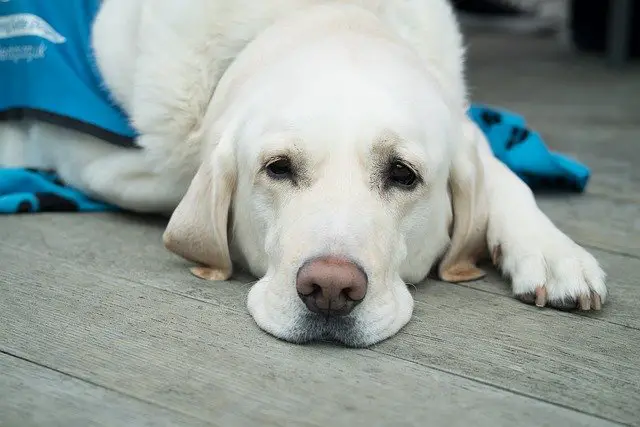
Here are our closing thoughts on this matter. Oftentimes, the cause of diarrhea in dogs is as a result of a desire of the dog owner to change his pooch’s diet. Sudden changes in diet often lead to diarrhea in dogs because their stomachs are very sensitive.
If you think your dog needs a change in diet and you have discussed it with your vet, and your vet has given you the go ahead, then make the transition gradual. Introduce the new diet gradually, and increase the quantity until your dog is ready to make the complete switch.
Now, if while you’re transitioning to the diet, your dog begins to pass loose stools, it might be time to slow down even more.
Another reason dogs often come down with diarrhea is because of intestinal parasites. So, when going in to see your vet, you might want to take a fecal sample along. Your vet will run a test on it for parasites tinier than the human eyes can see. Afterward, they will recommend medication to help treat such parasites.
Finally, dogs can practice what the experts call “dietary indiscretion.” That is, they often eat indiscriminately not caring where that food is coming from. Sometimes, it could be from the garbage, from the yard, or from table scraps.
Of course, feeding on this rubbish could eventually cause your dog to get sick with diarrhea.
How Much Chicken And Rice To Feed A Dog — Related FAQs
Do Dogs Poop Less When Eating Chicken and Rice?
Dogs do tend to poop less when eating chicken and rice. This is because chicken and rice is a low fiber diet and so it slows down the defecation diet. Bland diets such as chicken and rice are usually prescribed to give the stomach a break as well as to encourage normal stool formation for dogs. This ultimately means that your dog’s gastric system returns to normal and he poops less.
How Long Should A Dog Be On A Bland Diet?
After your dog stops vomiting, you want to keep him on the bland diet for, at least, 2 to 3 more days. Once his stool is back to normal, revert to his regular food but do it slowly. Begin by mixing the bland diet and his regular kibble in a 1:1 ratio. So, mix half bland diet with half regular kibble and increase the quantity of the kibble gradually until his stomach is stable enough to return to his diet completely.
Does Chicken and Rice Constipate Dogs?
Chicken and rice will not constipate your dog. However, chicken and rice alone is a deficient diet and shouldn’t be the only food you feed your dog. If you think your dog is constipated, encourage him to drink more water. Also, consider feeding him a high-fiber diet or including veggies and sweet potato to his diet.
Can Too Much Chicken and Rice Give My Dog Diarrhea?
Too much chicken and rice will not give your dog diarrhea but undercooked chicken and rice definitely will. Nonetheless, do not administer a bland diet to your dog for more than 48 to 72 hours after he stops vomiting as it could lead to dehydration in dogs.
My Dog Will Only Eat Chicken and Rice, What Do I Do?
One method to get your dog eating his regular food again is considered cruel by some dog owners but it works. Simply stop making chicken and rice available. Most dogs would catch the drift: if they don’t eat their regular food, they won’t get any other thing. Only very few might not. If your dog is one of those few or you consider the proposed recommendation cruel, then you might want to speak to a vet nutritionist.
Do note that if your dog is only eating chicken and rice, you probably have a picky eater on your hands and you need to deal with it. Because while chicken and rice as a diet in itself is not dangerous, it is deficient and cannot sufficiently nourish your dog as an everyday diet.
How Much Chicken and Rice for Dogs By Weight?
Here is how much chicken and rice to feed your dog according to their weight:
5 pounds and below: 1/2 cup.
5 to 15 pounds: 3/4 cup.
16 to 30 pounds: 1 cup.
31 to 50 pounds: 1.5 cups
51 to 75 pounds: 2 to 3 cups.
76 to 100 pounds: 3 to 4 cups.
100 pounds and heavier: 4 to 5 cups.
The above gives the daily food requirement by weight for dogs. Once you have the figures for your dog, you will then have to divide the daily food requirement into smaller portions of four to six servings.

